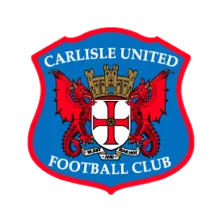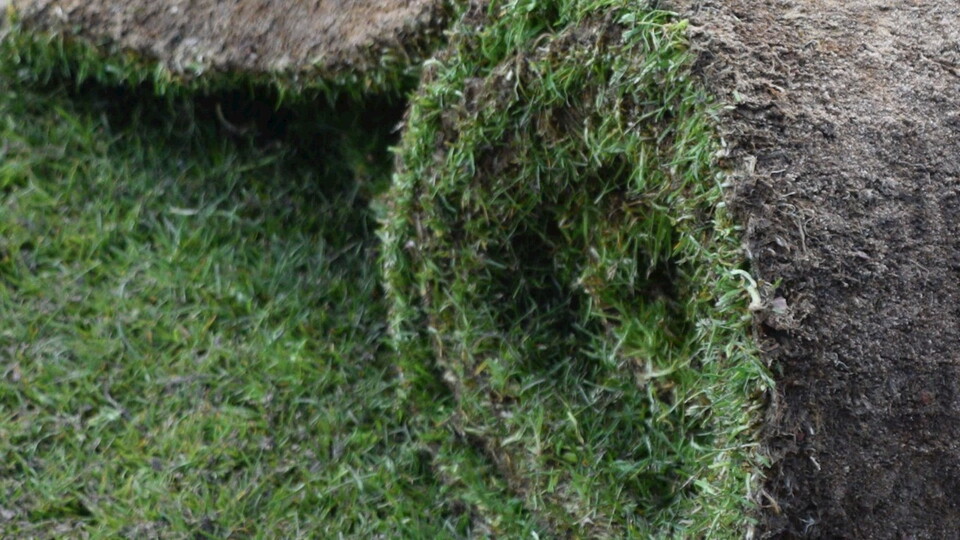As the Brunton Park pitch undergoes its summer makeover we took the opportunity to discuss pitch covers, postponements and undersoil heating with groundsman Dave Mitchell when he took a look back at what had been a challenging winter.
“The weather in January and February was difficult, possibly more so than it has been for a number of years,” he confirmed. “But knowing what the pitch was like to start with we knew where we were going to end up if those circumstances came our way.
“That all did become a reality with the cold weather, no regrowth of grass and a heavy fixture schedule, so it did all become a bit of calamity in the end.
“Just after Christmas I’d say we were ok, but then we went into that cold snap. We had the Leyton Orient game called off twice because of a frozen pitch, and also the Crawley game, all of which coincided with the outbreak of covid.
“After the Exeter game at home at the beginning of January we went downhill rapidly in terms of the quality of the pitch. Sometimes you want to water it before a game on a Saturday, but the temperatures meant that of we did that it would turn into an ice rink.
“The problem then, if you haven’t been able to water it, is that you can end up in a situation where the lack of water means there’s more friction between the boots and the pitch, which then means it gets ripped up a bit more.
“We were doing what we could on a game-by-game basis but by the end we were just hanging on by our fingernails, if we’re being completely honest.”
A man who takes pride in getting games on where others have failed, he admitted that it had hurt to have lost three during the spell when the temperatures were at their lowest.
“It’s always disappointing to lose a game to the weather, and the only good side was that we didn’t have fans who had rearranged their lives only for it to be called off,” he said. “The bottom line was that we knew when we were having to call games off we were going to end up squeezing it into a Tuesday night somewhere, which makes it even worse because the pitch doesn’t have time to recover.
“With the games we had off with the weather and with Covid, it was inevitable that it was going to end up like it did with us playing every Saturday and Tuesday.
“It was frustrating at times. With one of the Leyton Orient games we were so close to getting it on. We were here on the Monday looking at the pitch with all the sheets on and we all went home happy.
“We walked in on Tuesday morning and it was -8, then all hell breaks loose. That’s what we’re up against, we can’t control the weather, all we can do is take measures to try and help it.
“With the Crawley game that was easier to call because it was a prolonged spell of cold weather. We could probably have called that one off three or four days before, but the regulations say we have to keep trying then get a match official in.
“It is what it is, it was disappointing with the way things ended up, from top of the league to not top of the league and having to try and salvage a pitch for every home game.”
Losing the three games to the frost was bound to bring the issue of pitch coverings to the fore, with the club having trialled a innovative fleece just over 10 years ago.
“We always get questions about the fleece in these situations,” he told us. “The fleece works ok, but practically to store it and move it is a nightmare. We’ve had all members off staff out to help on occasions because it’s so heavy and difficult.
“I think the people who manufacture it are looking at a solution a bit like a sleeping bag, with a waterproof cover, but that just adds weight. That then means the size of each sheet has to be smaller to make it practical, which means you then need even more room to store it somewhere.
“In terms of the insulation it’s good, but it’s difficult. We’d roll it up with a bit of frost on the top then we couldn’t get it apart to put it back down again, and it kept the cold in like a flask.
“We are looking at different kinds of sheets but the main difference in them is the density of the sheet which can potentially keep out maybe one extra degree of frost for one extra night.
“I still maintain that an inch of grass cover is as good as anything, and if we do need the sheets the pitch copes better when there’s that amount of grass on it.
“However, yes, with the fleece, it does stop the really deep penetration. We had a game which was maybe 2011 against Huddersfield. The pitch had been rock hard but it had started to thaw out and it was still frozen five inches down, so that’s the level of penetration you get.
“The pitch we have is 80% sand, which is notoriously cold anyway, so that means it takes longer to warm up in the spring compared to soil. All those factors have an impact, but I keep going back to it, if we had an inch of grass cover which we can then lay the sheets we have now on top of it, that creates insulation.”
“Even in January if we’d had some grass cover when it was really cold, particularly at the shaded Warwick Road End, we might have got away with more. Unfortunately it was bare. It’s difficult to say exactly what could have happened because every night of frost is so different.
“I treat this pitch area as rural because it’s so open and there’s so much draught around the place. I’ve put three or four sheets on top of each other before, but it doesn’t make any difference, so it’s peculiar.
“The Warwick goalmouth had no grass cover when those games were called off, so the frost gets straight in and the sheet touches the sand, which means there’s no air gap in between. You do what you can, but sometimes you have to accept that you’re being faced with unusually low temperatures and there’s very little you can do, whatever type of covers you have.”
Added to the debate over the years has been the validity of the claim that undersoil heating pipes are in situ, with some saying that is the case and others insisting those claims are the thing of urban myth.
“They are there, and they run from the east stand across to the paddock, then loop back,” he confirmed. “There are two tails off that, then the next one goes.
“I think there’s 26 kilometres of it all told. They could be plumbed up at some stage, or even just some of them could be used down in the shaded third of the pitch.
“But then you’d be in a situation where you have some of the pitch with undersoil heating, and some that hasn’t. That would leave you with two different kinds of pitch to manage, so we’ll cross that bridge when we come to it.”
Click HERE to watch an interview with Dave Mitchell on iFollow United now.
Click HERE to see a clip from this interview on our YouTube channel. Follow the same link for more FREE content right from the heart of the club.

